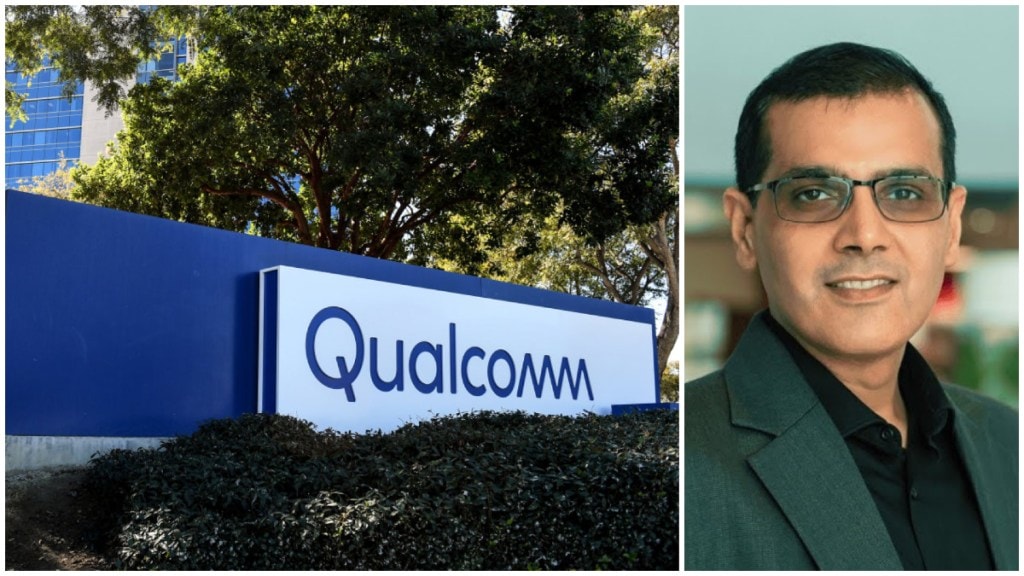In an exclusive interview with financialexpress.com, Gautam Sheoran, Vice President and General Manager, Product Management Wireless Broadband & Communications at Qualcomm Incorporated, shares insights into the transformative potential of 5G in India. Leading Qualcomm’s modem portfolio and spearheading its 5G fixed wireless access (FWA) initiatives globally, Sheoran discusses the growing consumer demand for wireless broadband in India.
He emphasises how 5G’s wireless fibre technology is addressing challenges posed by traditional wired networks, especially in densely populated urban areas. With operators leveraging 100 MHz spectrum in the 3.5 GHz band, India is witnessing rapid broadband adoption, driven by FWA’s ease of deployment and affordability.
Sheoran also highlights Qualcomm’s collaboration with operators and OEMs worldwide to accelerate FWA launches while confirming that Wi-Fi 7 devices like the Sony PlayStation 5 Pro can launch in India on existing 2.4 and 5 GHz bands.
Excerpts.
FE: How has 5G deployment transformed broadband in India?
Gautam: When 5G rolled out, Indian operators acquired large spectrum chunks—100 MHz in the 3.5 GHz band. This enables over 2 Gbps speeds, akin to wireless fibre and operators have started utilising it to roll out fixed wireless access (FWA) services. Before this, India had cable or fibre. But the wire technology is a little bit hard to roll out everywhere in India. Even within the urban areas, there are dense communities that developed hundreds of years ago. Wireless fibre is perfect. We see two things. First is that the consumer appetite is immense. Some operators were skeptical. But they have been pleasantly surprised by what is happening. They’re fulfilling a need, and the consumers are picking it up tremendously. We think it’s a great technology for India. What would be interesting to track is how this improves broadband availability in India and how the rate of growth changes. We are very, very optimistic. Our partners are very, very optimistic and so far, so good.
FE: How does 5G compare to previous generations in terms of spectrum usage?
Gautam: 3G offered slow speeds, maximum 42 Mbps due to limited spectrum. 4G was phenomenal but mostly used 20 MHz channels. With 5G, operators received 100 MHz of spectrum on day one, doubling the capacity. This makes 5G a game-changer in terms of performance and capability.
FE: What advancements in 5G phones have made them more accessible?
Gautam: 5G phones started off very expensive. Over time, new technologies have made them more affordable, allowing even mid-tier and low-tier phones to adopt 5G. The 100 MHz bandwidth enables better performance, and the combination of advanced features has driven widespread adoption.
FE: Why is fixed wireless access (FWA) gaining popularity globally and in India?
Gautam: For FWA, what we have seen globally is, any operator that has launched FWA on 5G has been successful. There are several reasons why operators launch 5G FWA. For example, in the US, there’s an operator—T-Mobile—that was never in the home broadband space. Now, they have this 5G wireless network that they’re deploying for handsets and said what more can we do with that. So they launched a fixed wireless access service. Now they have close to five million subscribers. They created a new business line in which they were never there. And they utilised their existing mobility network for that. That is one use case—new operators trying to enter the space, which was traditionally dominated by cable providers, fibre providers, and bringing more competition to the market.
Second is, even in places like the US, fibre is excellent, but it takes time, it takes money to roll out. And pretty much the cell phone signal or 5G signal is everywhere. Say if you want to launch FWA service, you are really tapping into the network that you are already deploying for handsets. India is in a unique situation. Number one, India has all the broadband technologies, cable and fibre. But fibre is not everywhere. Jio has tried, Airtel has tried, even in a place like India where we have access to a lot of labour, it is difficult to roll out fibre everywhere. Now, what we are hearing from our partners is that FWA is really easy. It takes one hour to install, you could do multiple home installations in a day. If you were to do fibre, you could do one or two maximum in a day. That’s why I think the broadband penetration is going to increase at a faster rate in India, just because it’s easier to deploy now.
FE: How has 5G FWA impacted deployment costs and network capacity?
Gautam: 5G FWA costs have come down dramatically over the last couple of years. In India specifically, which is a very competitive market, we are hearing from our partners that 5G is comparable or even easier to deploy than fibre. Sub-6 GHz spectrum (100–130 MHz) is currently used, but as data consumption grows, operators will likely add more sub-6 capacity, millimetre wave spectrum, or even deploy fibre.
FE: What is the difference between non-standalone (NSA) and standalone (SA) 5G networks?
Gautam: When 5G was launched, there was a lot of appetite in the industry to launch it fast. So, the standards body worked on this thing called non-standalone in which there was an LTE 4G anchor carrier, and you just added a 5G carrier on top of it, so you could have 100 MHz of 3.5 GHz, but you could have 20 MHz of 1800 band on LTE. So, operators could just add on a 5G carrier without changing the core network and roll out 5G at a much lower initial investment point. And a lot of leading launches in the US and other markets really happened in non-standalone way.
Operators in India, like Jio, started with standalone, because they were rolling out a fresh network. And Airtel is now going to standalone. What standalone means is basically 5G works on its own. If you don’t have 5G, you fall back to 4G, 3G or 2G. It does require a 5G core network. When you do 5G standalone, you can really dimension your network very well. You can use network slicing, you can designate X amount of capacity for FWA services, or designate a low latency slice so that if you have FWA service in your home and you’re doing gaming, you have the option of getting on that low latency gaming slice and get a better latency performance on the network. So, there are new services that operators are looking at rolling out with 5G standalone. And that’s really the promise of that.
FE: How is India positioned globally in spectrum allocation, especially for millimetre wave and Wi-Fi?
Gautam: In a lot of spectrum decisions, I’ve seen the government being very forward looking, especially on millimetre wave. On Wi-Fi, I know there’s a lot of deliberation going on how best to use the 6 GHz spectrum. I’m sure they’re going to come up with an excellent outcome at the end of it but it’s still being debated.
FE: Can Wi-Fi 7 devices launch without access to the 6 GHz band?
Gautam: Yes, Wi-Fi 7 can launch on existing 2.4 and 5 GHz bands. While the 6 GHz band offers benefits like less congestion and multi-gigabit speeds, it isn’t a necessity. I can’t imagine a device being dependent on a multi-gigabit data rate because that could be the only reason, right? Otherwise, most of the devices can launch. 6 GHz is rolling out globally but it’s not available in all the countries today. We don’t see that as an impediment to launching devices. It does bring additional Wi-Fi spectrum and use cases and all that. But technologies like Wi-Fi 7 can be launched even without 6GHz. In fact, we are seeing Wi-Fi 7 launch globally on 2.4 and 5 GHz bands only.









